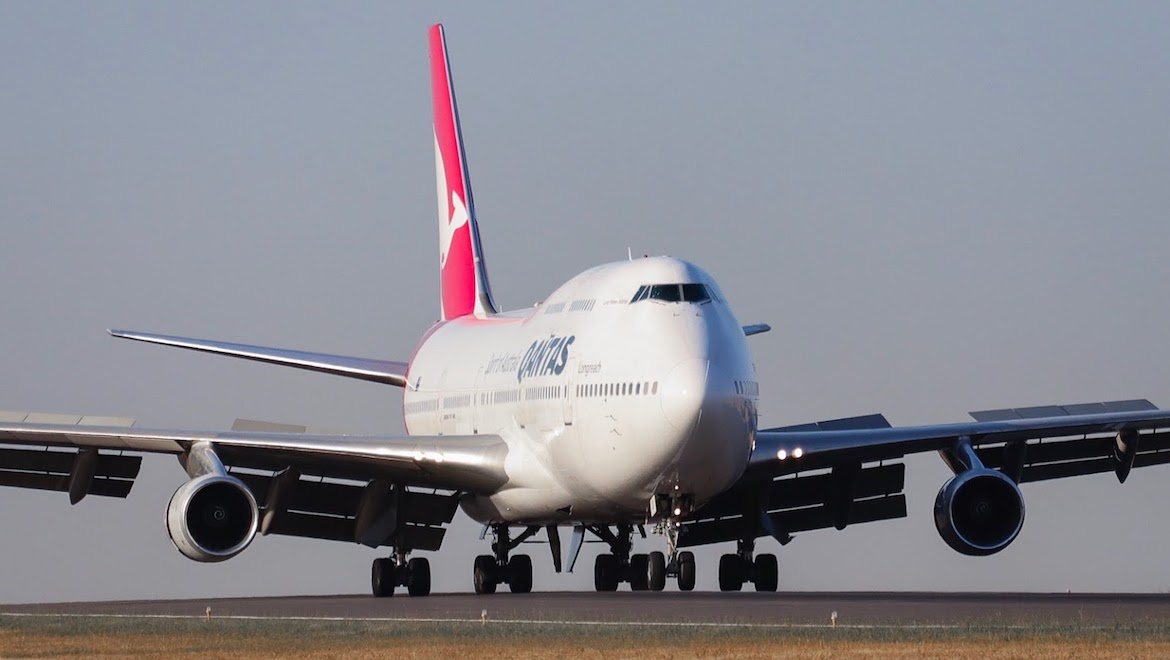
Qantas says its Boeing 787-9s will be used to South America from June 2020 when the aircraft replaces the 747 on the Sydney-Santiago route.
In addition to the equipment change, Qantas said on Thursday it also planned boost the service from between three and four times weekly currently to daily.
Qantas’s 787-9s feature 236 seats comprising 42 in business class in a 1-2-1 configuration offering direct aisle access for every passenger, 28 in premium economy laid out 2-3-2 across and 166 in economy in a 3-3-3 layout with 32in seat pitch and 17.2in seat width.
Meanwhile, the 747-400 and 747-400ERs feature 364 seats, with 58 in business in a 2-2-2 configuration, 36 in premium economy at eight abreast and 270 in economy in a 3-4-3 layout.
Based on the cabin configuration, the change from four 747 flights to seven 787-9 flights a week represented a capacity increase of 196 one-way seats a week, or about 10,000 one-way seats a year.
“We launched our direct service from Sydney to Santiago in 2012 and the demand from Australians and South Americans has given us confidence to add even more flights on the route,” Qantas international acting chief executive Naren Kumar said in a statement.
Qantas’s move to a daily flight to Santiago from late June 2020 – no exact start date was given – follows codeshare partner LATAM announcing earlier in 2019 new three times weekly Sydney-Santiago nonstop flights from October 29 2019, while reducing the existing Sydney-Auckland-Santiago schedule from daily to four times weekly.
Santiago is one of a remaining handful of international destinations in Qantas’s Boeing 747 network alongside Hong Kong, Johannesburg, San Francisco and Tokyo Haneda. In recent times, the 747 has also been used on seasonal Sydney-Vancouver services and on Sydney-Honolulu at certain times of the year.
Sydney-San Francisco 747 flights end in December, representing the end of Qantas Boeing 747 service to the United States mainland.

Currently, Qantas’s eight 787-9s are used to Hong Kong, London Heathrow, Los Angeles New York JFK and San Francisco.
The airline was expected to receive a further six of the next generation widebodies due to arrive between October 2019 and the end of 2020.
Qantas said when announcing the top-up 787-9 order in May 2018 the additional six aircraft would enable the airline to retire its fleet of 747-400/400ERs by the time it celebrated its centenary.
The Qantas 747 fleet stood at seven aircraft, comprising six GE-powered 747-438ERs (VH-OEE thru OEJ) delivered between 2002 and 2003 and one Rolls-Royce-powered 747-438s (VH-OJU) delivered in the 1999-2000 timeframe.
The most recent retirement was VH-OEB MSN 25778 Phillip Island, which was withdrawn on June 2.
The 26-year-old aircraft operated its last commercial flight as QF73 from Sydney to San Francisco. It was then ferried to Los Angeles as QF6021 and onwards to Tupelo Regional Airport.
After 26 years of service #Qantas #Boeing 747-48E Reg: VH-OEB lands at #LAX one last time on Sunday June 2nd, 2019. Operating as flight QF6021 from #SanFrancisco the “Queen” officially retires from the Qantas fleet. #planespotting #b747 #avgeek #qantas747 @Qantas @flyLAXairport pic.twitter.com/0V4a4HAmGN
— AIRLINE VIDEOS (@airlinevideos) June 3, 2019
The GE-powered VH-OEB was the last 747 that had Qantas’s old first class seats in the nose, with the remaining 747-400s and -400ERs having been reconfigured with a three-class layout comprising business, premium economy and economy.
It was built for Asiana in 1993 and acquired by Qantas in 1998.
In all, Qantas has operated 65 747s, taking delivery of 57 new 747s from Boeing, purchasing three 747‑400s secondhand and operating five leased aircraft at various points. And for a period between the retirement of its last 707 in March 1978 and the delivery of its first 767 in July 1985 Qantas even operated an all-747 fleet.
The first 747 entered service with Qantas in September 1971, and in time the airline would operate almost every major 747 variant, including the 747SP, the 747 Combi, the 747-300 (which introduced the extended upper deck), the 747-400, and the 747‑400ER (Extended Range).










